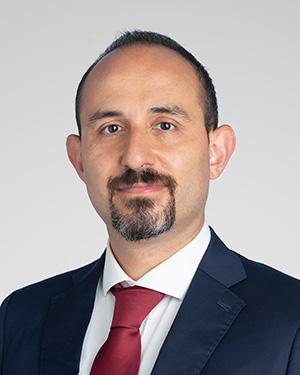Research News
09/13/2023
Cleveland Clinic, Harvard and MIT collaborate on capturing neurological activity obscured by brain tissue using AI
An ongoing collaboration between Dr. Murat Yildirim and colleagues at Harvard and MIT aims to make it easier to track neurological activity deep within brain tissue.

To better understand neurological disorders, scientists need to be able to capture brain activity in a matter of milliseconds and deep within live tissue.
An ongoing research collaboration between Cleveland Clinic, Harvard University and the Massachusetts Institute of Technology is developing microscopes and AI models that can rise to the task. Their approach, called "Deep Learning Powered De-scattering with Excitation Patterning" (DEEP²) uses ultrafast lasers to penetrate light throughout the tissue at a larger scale, taking thousands of measurements. Their method was published in Nature Light: Science & Applications.
These measurements then are translated to images using a deep learning algorithm. After being trained using large data sets, deep learning models can quickly pull and analyze data to produce images.
The partnership recently unveiled DEEP² in Light: Science and Applications. DEEP² is an update to a model the team published in 2021, called “De-scattering with Excitation Patterning” (DEEP). DEEP’s updated algorithm produces clearer images based on fewer data points – 32 DEEP² measurements instead of 256.
“Current techniques can’t reach the depth and speed we need to advance our understanding of neurological conditions like autism spectrum disorders, Alzheimer’s Disease and multiple sclerosis,” says Cleveland Clinic’s Murat Yildirim, PhD, Neurosciences. “By creating and refining microscopy techniques integrated with computational imaging techniques like DEEP2, we’re providing invaluable clinical context for patient care.”
Dr. Yildirim’s team spearheaded the DEEP microscope’s design and its use in preclinical models and worked with colleagues at Harvard and MIT to train and develop the accompanying computational model.

How does DEEP work?
Bright-field microscopes – often used in science classes in high school – are a simple form of optical microscopy. The user mounts a very thin sample or object on a glass slide, then places it on a platform under the lens. A light then shines through the glass sample, creating a detailed image.
That microscope is designed for capturing samples that are still and very thin. Clinical researchers need to see intact systems in motion. DEEP² microscope uses wide-field multiphoton microscopy integrated with deep-learning algorithms, designed to capture images quickly and deeply. Using ultrafast lasers similar to those used in LASIK surgery in the clinic, the microscope shines light throughout a large piece of the sample to take measurements.
The computational model analyzes the measurements to create a better, sharper image. Dr. Yildirim compares the brain imaging process to using a telescope to look at the stars. There are layers of clouds and atmosphere that can obstruct your view or make it blurry – like layers of tissue in the brain.
The goal is for the DEEP² algorithm to sift through the data and use the right measurements that aren’t blurry or obstructed. As the algorithm improves, so do the images.
Dr. Yildirim’s lab also works on other computational models at Cleveland Clinic as part of the Discovery Accelerator to push the limits of deep tissue imaging, a research partnership with IBM.
“We can harness how quickly artificial intelligence and deep learning is advancing in this type of imaging,” Dr. Yildirim says. “These advanced technologies – including quantum computing – open a door for us to understand health problems in a way like never before. The tools are there, we just need to build and refine the best ways to use them.”
Featured Experts
News Category
Related News
Research areas
Want To Support Ground-Breaking Research at Cleveland Clinic?
Discover how you can help Cleveland Clinic save lives and continue to lead the transformation of healthcare.
Give to Cleveland Clinic